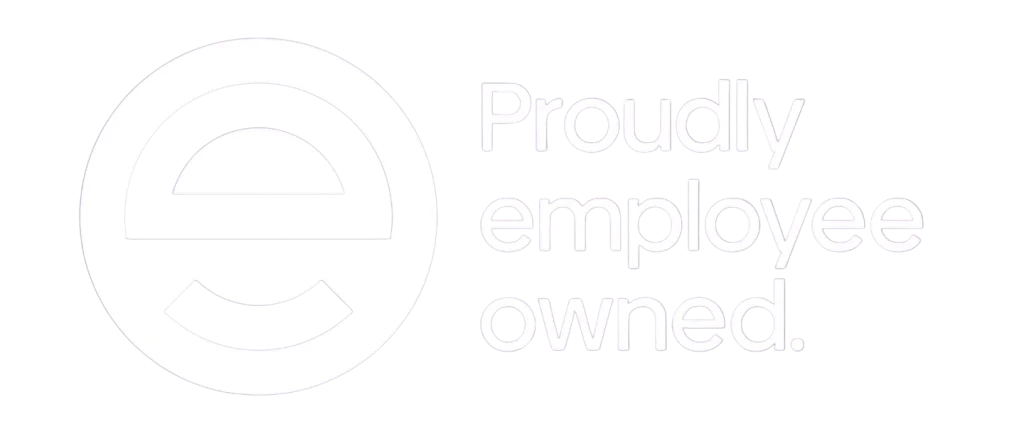Japanese knotweed removal methods for development sites
We help businesses like yours develop land affected by Japanese knotweed. We provide proven eco-innovative commercial removal and treatment solutions at competitive prices
Quick Links
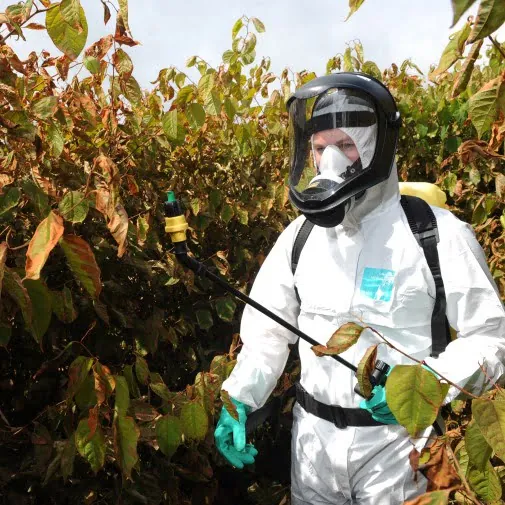
Japanese knotweed herbicide treatment
Herbicide treatment is a popular control method because it has the advantage of being relatively low cost, and is effective if done correctly.
Herbicide treatment is a popular control method, carried out during the growing season. Treatment control programmes typically consist of 4 treatments, spread over 2 growing seasons and annual monitoring visits in years 3 and 4. Large, mature stands are likely to require significantly more visits than this. It has the benefit of being low cost, however do bear in mind it is not suitable if the ground is going to be disturbed.
“Environet responded to our initial enquiry in an exemplary fashion, by attending site within the timescale provided along with providing us a clear and concise remediation strategy in line with our build programme, ensuring no delays on site which, as developers, is key.”
Ethan Ballam, Technical Manager - Devine Homes PLC
Xtract™ - Zero-waste solution
Xtract™ – rapid and reliable removal of Japanese knotweed from development and construction sites avoiding the cost of “dig & dump” to landfill.
Environet has developed eco-innovative patented technologies that enable us to remove just the viable rhizome, thereby avoiding the need to consign vast quantities of affected soil to landfill, giving our clients considerable cost savings.
The goal is to remove all viable knotweed rhizome to prevent future regrowth, and to eliminate the need to dispose of infested soil, to create a ZERO WASTE remediation process.
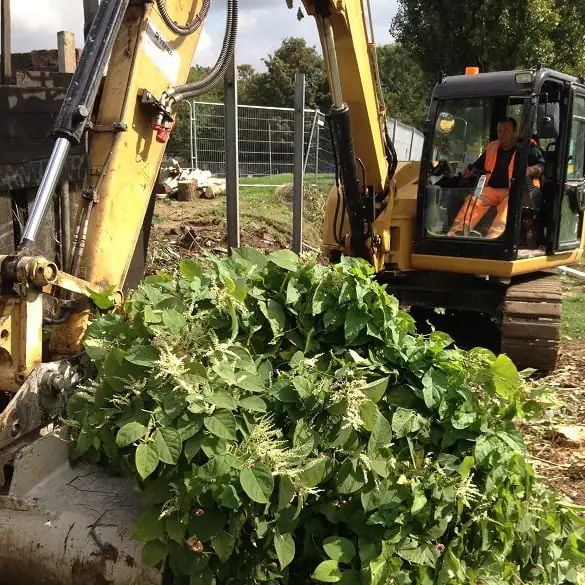
- Removal in a matter of days, keeping your construction on programme. You cannot achieve the same with herbicide methods.
- Designed specifically for separating and removing Japanese knotweed rhizome from knotweed infested soils. No rhizome, no regrowth.
- Best environmental option, avoiding the need to import clean fill and involves no haulage or disposal of infested soil to landfill.
- Patented in the UK.
- Typical savings of up to 50% compared to other removal methods.
- As it’s an on-site remediation method, you may be able to save even more by claiming Land Remediation Tax Relief.
We have different technologies for the excavation and processing depending upon the extent of affected soil and on site specific conditions such as access. Infested soils are excavated using a 360° tracked excavator. The excavation work is supervised by one of our experts to ensure all soil containing viable rhizome, but not more than is necessary, is excavated.
The excavated infested soils undergo a screening process in the Xtract™ machine to separate the Japanese knotweed rhizome from the soil using our patented technology.
Clean processed soils are then immediately ready for re-use on site. Please note that these materials must remain on site. If you intend to dispose of them, then waste legislation applies and the material must be consigned as knotweed infested.
A 5 or 10 year insurance- backed guarantee (IBG) underwritten by an “AA-” rated insurer is issued upon completion, providing security to the risk averse banks and building societies.
To Start Fixing your Japanese Knotweed Problem Today
Call our team for specialist advice and effective solutions
Stockpile & Treat (Bund method)
The bund method, a hybrid method combining physical excavation and herbicide treatment, suitable for large phased developments.
Stockpile & Treat is a cost-effective method for large development sites where knotweed infested soils are present in construction critical areas, and where space allows for temporary stockpiling.
The method involves the physical excavation of all infested soils that contain viable rhizome within construction critical areas.
These soils are then stockpiled in a non-critical area on site, preferably no higher than 500mm thick. Knotweed growth in the stockpile is actively encouraged, ready for subsequent herbicide treatment.
Procedures are put in place to ensure that the knotweed infested soil is not allowed to spread to otherwise clean areas of the site.
This method can prove very economical, but this method requires large areas of space to be allocated for the stockpile so is not suited to many development sites. The treated stockpile material should remain on site, unless it is consigned off site as potentially knotweed infested.
The thickness of the stockpile can be increased to reduce the space requirement, but this will extend the treatment period using herbicides to more than two growing seasons. So it may be that other methods, such as Xtract™, are better suited.
If you would like a quote for knotweed removal with an insurance-backed guarantee underwritten by an “AA-” rated insurer then please give us a call today.
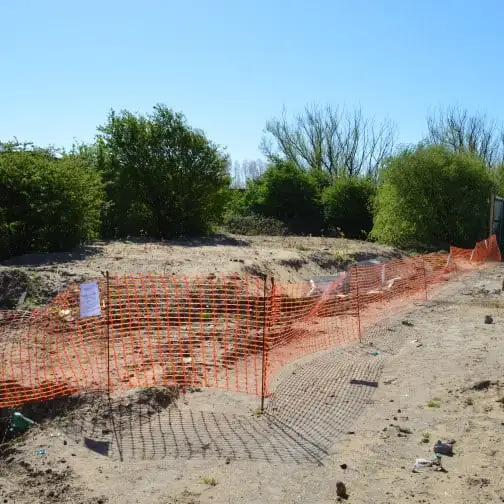
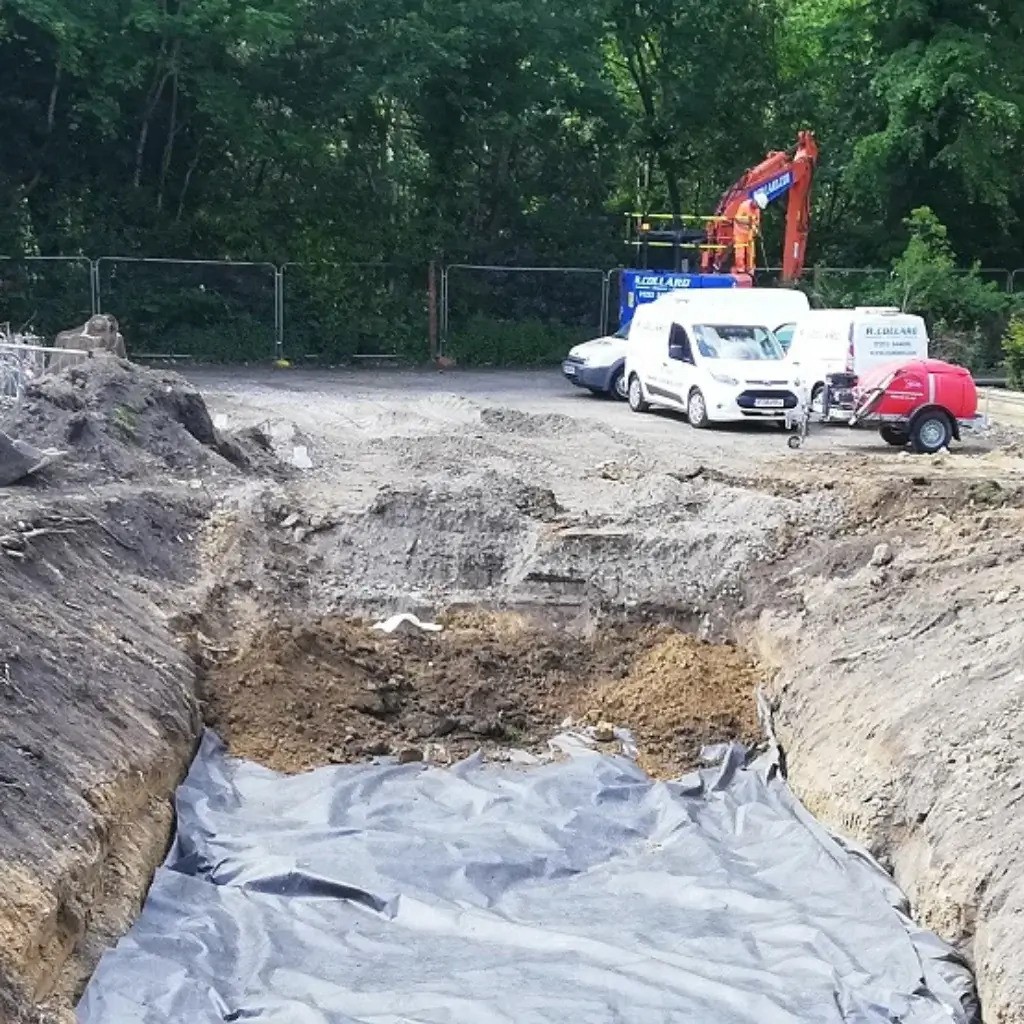
Cell Burial
Cell Burial is a temporary method of containing Japanese knotweed infested soil on-site within a cell lined with proprietary membrane.
The method involves the physical excavation and stockpiling of infested soils. A burial pit is then created, typically 5 metres deep.
The burial pit is then lined with a proprietary root barrier on the bottom and sides, with all joints welded together. The stockpile is backfilled into the burial pit. A root barrier is then laid over the surface of the infested soils and welded to the sides to form a complete containment cell.
Finally the material from the clean stockpile is laid over the containment cell with a minimum of 2 metres cover. The remaining clean material is used to backfill the previously infested area.
The success of this method relies upon the integrity of the cell membrane, which if damaged during or after installation may result in knotweed escape. The method is likely to be less expensive than disposal off site, however it does not remove the problem from site – it simply contains it.
Viability of cell burial is determined by two main factors. Firstly, available space outside of the development footprint (for example Public Open Space (POS) or large car park areas) as cells cannot be built over. Secondly, the depth of the water table – which needs to be at least 3m below finished ground level.
If you would like to speak to our friendly team of specialists to discuss the various Japanese knotweed removal methods we offer, then please get in contact today.
“I’d like to also just convey how impressed we’ve all been with the service and work of your team – we’d have no hesitation in using you again (even though I hope the situation never arises… !), nor in recommending you to anyone else.”
Anonymous, Developer - Devon
Dig & Dump
The physical excavation and removal of Japanese knotweed from site – the method of last resort.
Dig & Dump involves the physical excavation of all soils containing viable Japanese knotweed rhizome. These are then loaded into a lorry, typically an 8 wheeler 20 tonne payload, and transported to a licensed landfill site, for disposal.
There are significant adverse environmental impacts arising from haulage, the use of valuable landfill and the need to import clean fill. The Environment Agency Code of Practice clearly states that you should consider this as the method of last resort.
Dig & Dump is a very expensive method which attracts Landfill Tax. With expert supervision it is usually possible to substantially reduce the cost by minimising the volume of soil being classified as knotweed infested.
With a trained eye, one can establish the depth and lateral spread of the rhizome system. The volume can sometimes be reduced by as much as 50%.
All our Dig & Dump projects are offered with an insurance- backed guarantee for up to 10 years, underwritten by an “AA-” rated insurer.
For an eco-friendly alternative to Dig & Dump, speak to us about our Xtract™ method. Supported by our insurance backed guarantees for up to 10 years, underwritten by an “AA-” rated insurer, Xtract™ leaves development sites knotweed free in a matter of days, at up to half the price of Dig & Dump.
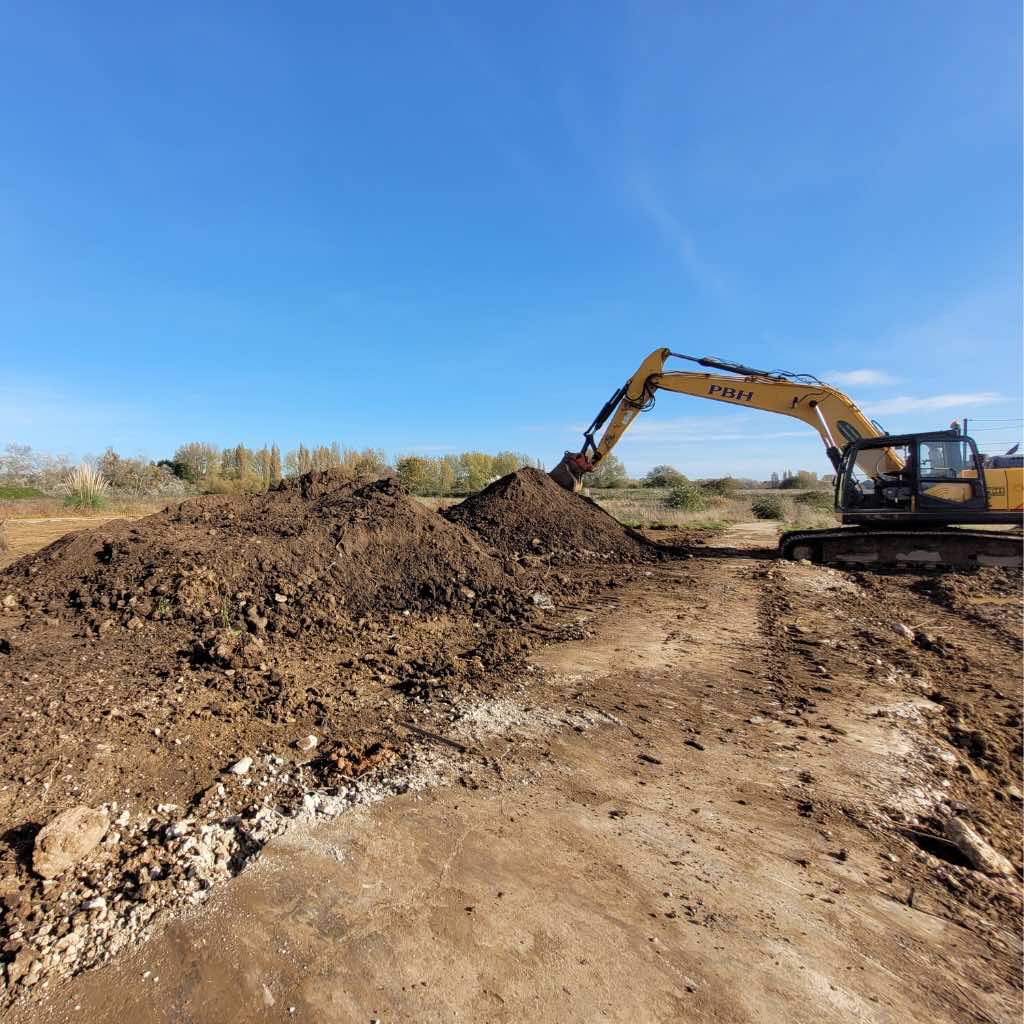
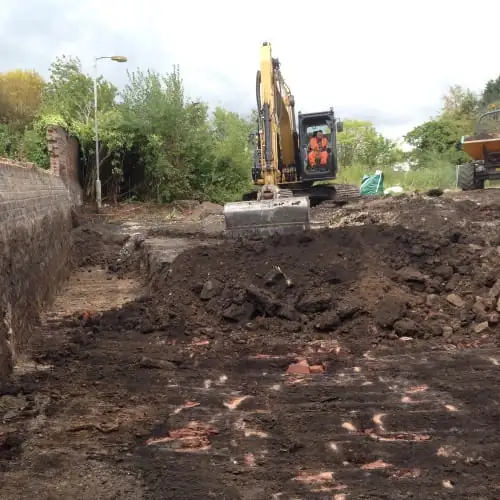
Site supervision
Speak to us about site supervision if you already have access to machinery and labour on your development site.
We have experienced site managers who can work alongside existing resources, giving our clients peace of mind that the work will be executed correctly, whilst providing great value for money.
Typically our site supervision includes:
- Method Statement and Risk Assessment.
- Tool box talk for any site staff that may come into contact with knotweed.
- Comprehensive briefing for site staff involved in the removal of the knotweed.
- Supervision of all work by an experienced site manager.
- Assured legal compliance.
- Supply of suitable root barrier (where required).
- Post treatment management plan and insurance backed guarantee, underwritten by an “AA-” rated insurer.
Where ground on development sites is not going to be disturbed and therefore herbicide treatment of knotweed proves viable, we can supervise the installation of knotweed exclusion zones and provide appropriate signage and hazard tape.
We also supply experienced operations managers to oversee groundworks in close proximity to knotweed treatment areas to ensure no accidental disturbance of rhizome occurs.
Accreditations
We have robust systems in place for Environmental and Health & Safety management. Risk assessments are carried out for every aspect of our business to identify situations where harm could be caused. We have an ethos of continuous improvement to eliminate or reduce the risks with detailed working procedures, on-going training and monitoring.
All our staff have health and safety and emergency first aid training. We are also accredited by CHAS and Constructionline and are members of the Property Care Association (PCA).
GET IN TOUCH
Contact us
Our team of experts is available between 9am and 5:30pm, Monday to Friday to answer your enquiries and advise you on the next steps
Want a survey?
If you already know you have an invasive plant problem, you can request a survey online in less than two minutes by providing a few brief details. A member of the team will swiftly come back to you with further information and our availability.
Need quick plant identification?
Simply upload a few images of your problem plant to our identification form and one of our invasive plant experts will take a look and let you know, free of charge what you are dealing with. We’ll also be there to help with next steps where necessary.



